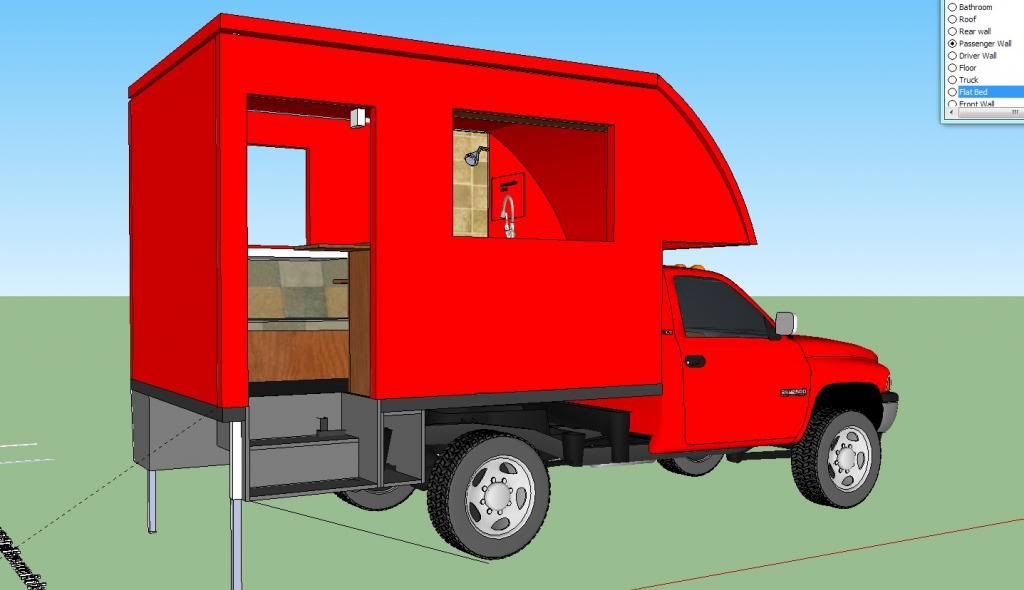How I ended up with a Dodge farm truck
As a winter vehicle diesel heat really makes more sense then propane. With this in mind I set out looking for a diesel truck. I have always been a fan of imports, unfortunately the only diesel option in 4wd is the mitsubishi FG 4x4. I like the cabover concept and this vehicle was my first pick, but there are numerous downsides. They are hard to find in my price range, there simply aren't many out there used, and they don't like to cruise on the highway which is mandatory. These are large deal breakers for me so I was left with buying something from the big 3.
While searching on craigslist I found a dodge farm truck that had been traded in at a dealer that was in quotes "dangerous to drive". My friend who was familiar with dodges figured it was the infamous "death wobble" and we set out to buy it for cheap. To those uninitiated the death wobble plagues all solid axle front coil sprung jeeps and pickups. You will be driving along hit a bump and your steering wheel will start to move back and forth. Sometimes mildly other times so ferocious that your wheels will leave the ground and you will probably wet your self. Here is a video of a mild case
I experienced the death wobble after buying this truck and even after fixing it, I was nervous for quite awhile to drive at any speed it can be freaken SCARY because at least on my truck it was not predictable like in the video i linked. You never knew when it would occur, it was very rare. If you have a severe case, which I did, you lose all ability to steer, the only thing you could do was hang on for dear life and hit the brakes.
So long story short $2000 for the truck, and $2000 in steering components, brakes, and tires. I now have a reasonably reliable truck, (though not pretty) with a very reliable cummins 12valve.
bansil the camper itself is designed to sit on a custom flatbed which could be mounted on any pickup, probably an fg as well. I don't have much brand loyalty it could go on just about anything. In fact it doesn't need to be diesel as the camper will need its own tank to have self sufficient operation when dismounted from the truck. To switch vehicles I would have to build a new flat bed frame. If the new truck has a wider frame then my 95 dodge then I will have to redesign the stairs and lower storage boxes that you can sort of see in this picture. These storage boxes are attached to the camper. My custom flatbed, not shown in the picture, is only 4ft 2inches wide. The stairs and boxes will straddle this flatbed. Worst case the over cab portion would need to be re-done as well.

My design is unique in that I plan to make my camper removable from the truck yet have the batteries and water still mounted on the truck frame for better center of gravity. My hope is to be able to remove the box from the truck including water tanks and batteries which will be mounted in front of the rear wheels in about half an hr. I plan on using something like the crawling camper system, no unstable jacks.
http://www.truckcampermagazine.com/camper-lifestyle/sport-cam-1158z-the-crawling-truck-camper.

